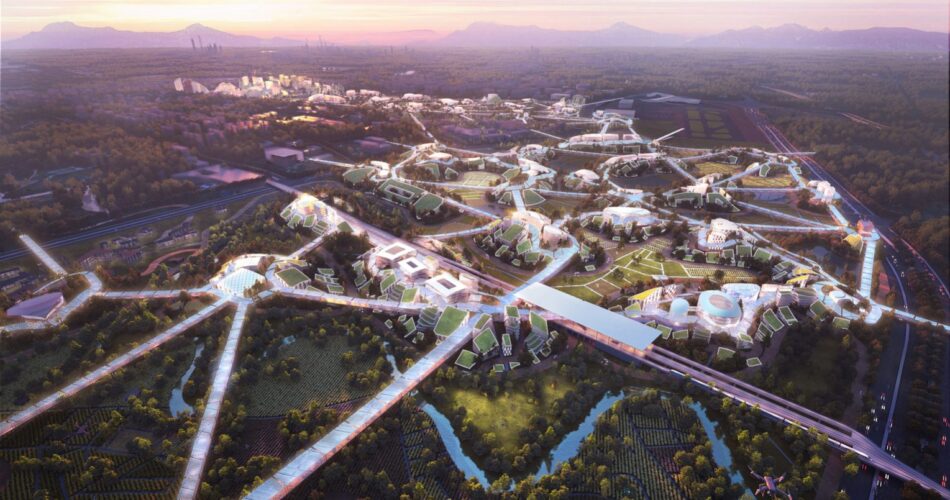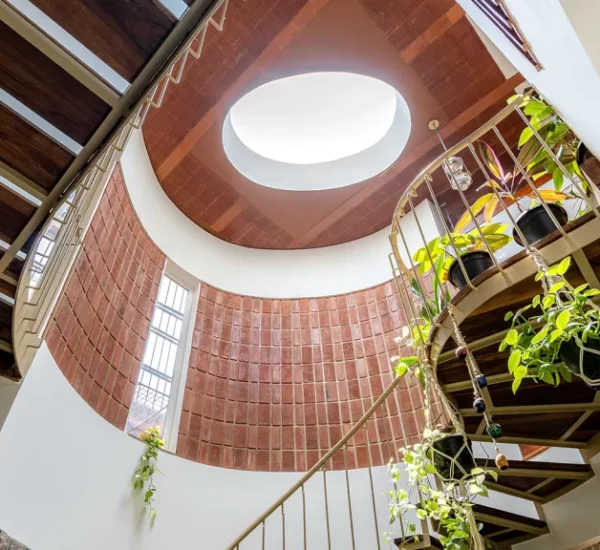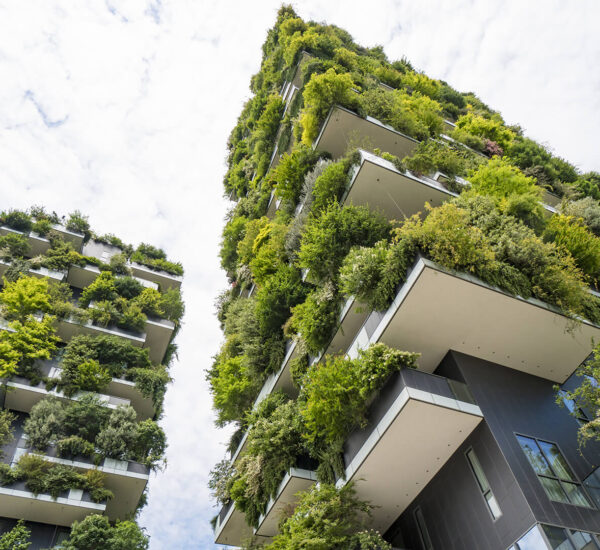As the world’s population continues to grow and urbanization accelerates, cities are evolving to meet the demands of modern life. Enter the concept of smart cities—urban environments where technology, sustainability, and innovation come together to enhance the quality of life for their residents. The future of urban architecture lies in creating spaces that are not only functional and aesthetically pleasing but also connected, efficient, and responsive to the needs of their inhabitants. In this post, we will explore how architecture is adapting to the rise of smart cities, examining how technology, sustainability, and data-driven design are shaping the cities of tomorrow.
1. The Role of Technology in Smart City Architecture
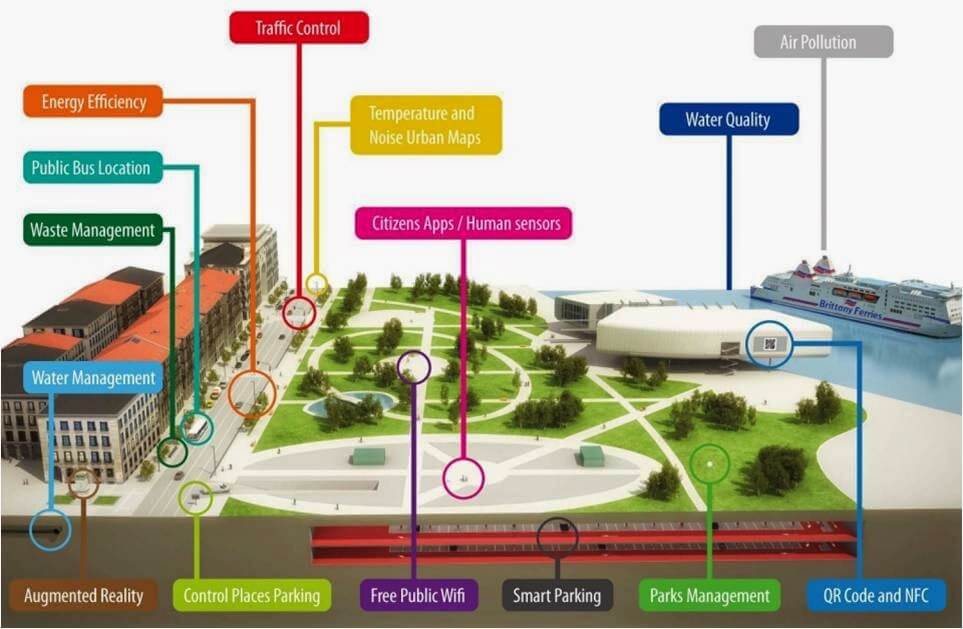
At the heart of smart cities is the integration of cutting-edge technology that improves the functionality of urban spaces. From Internet of Things (IoT) sensors to AI-driven building management systems, technology is enabling buildings and entire cities to become more responsive, efficient, and interconnected.
- Key Technologies Shaping Smart Cities:
- IoT Integration: Internet of Things (IoT) technology allows for the connection of various devices within buildings and public spaces, creating a network of smart sensors and systems. These sensors monitor everything from energy usage to air quality, enabling buildings to optimize their performance in real time.
- AI and Data Analytics: Artificial intelligence (AI) and big data are being used to manage everything from traffic flow to energy consumption. AI systems can analyze vast amounts of data to optimize urban systems, improving everything from waste management to transportation networks.
- Example in Architecture:
- The Edge (Amsterdam): This office building, known as one of the world’s smartest buildings, uses IoT technology to enhance the work environment. Smart lighting, climate control, and desk assignment are all controlled via an app that tracks employee preferences and building usage patterns. This intelligent system makes the building more sustainable and adaptable to its occupants’ needs.
- Why It Matters: Technology in architecture not only increases the efficiency of buildings but also makes them more adaptive and personalized. In a smart city, buildings can respond to the changing needs of their users, offering a more comfortable and functional environment.
2. Sustainable Design for the Future
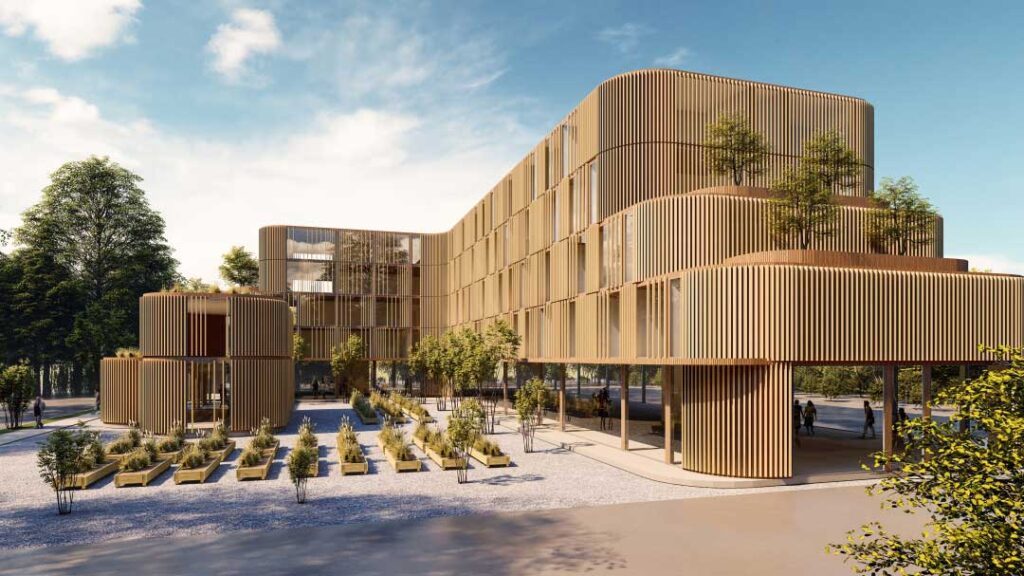
Sustainability is a cornerstone of smart city development. As cities grow, it is essential that urban architecture embraces sustainable practices to minimize environmental impact and create healthier, more livable spaces. Smart cities provide the ideal environment for integrating green technologies that reduce resource consumption and promote long-term environmental health.
- Sustainable Features in Smart Architecture:
- Green Building Materials: The use of sustainable materials like recycled steel, bamboo, and low-carbon concrete helps to reduce the environmental impact of buildings. These materials, combined with smart construction techniques, ensure that buildings are energy-efficient and have minimal ecological footprints.
- Energy-Efficient Systems: Solar panels, wind energy systems, and advanced insulation techniques are becoming standard in smart city designs. Buildings are being designed to generate, store, and use energy efficiently, contributing to the overall sustainability of the city.
- Urban Farming and Green Roofs: In response to urbanization, architects are designing spaces that incorporate green roofs, vertical gardens, and urban farming systems. These features not only improve air quality but also provide opportunities for local food production in urban environments.
- Example in Architecture:
- ** Bosco Verticale (Milan, Italy):** The Vertical Forest is a pair of residential towers covered with thousands of trees and plants. This innovative design reduces pollution, provides natural insulation, and promotes biodiversity in the urban landscape. The integration of nature into urban living is a hallmark of sustainable smart city design.
- Why It Matters: As climate change becomes an increasingly pressing issue, sustainable architecture in smart cities will play a critical role in mitigating environmental impacts. Buildings designed with sustainability in mind help create healthier, more resilient cities for future generations.
3. Smart Mobility: Designing Cities for the Future of Transportation
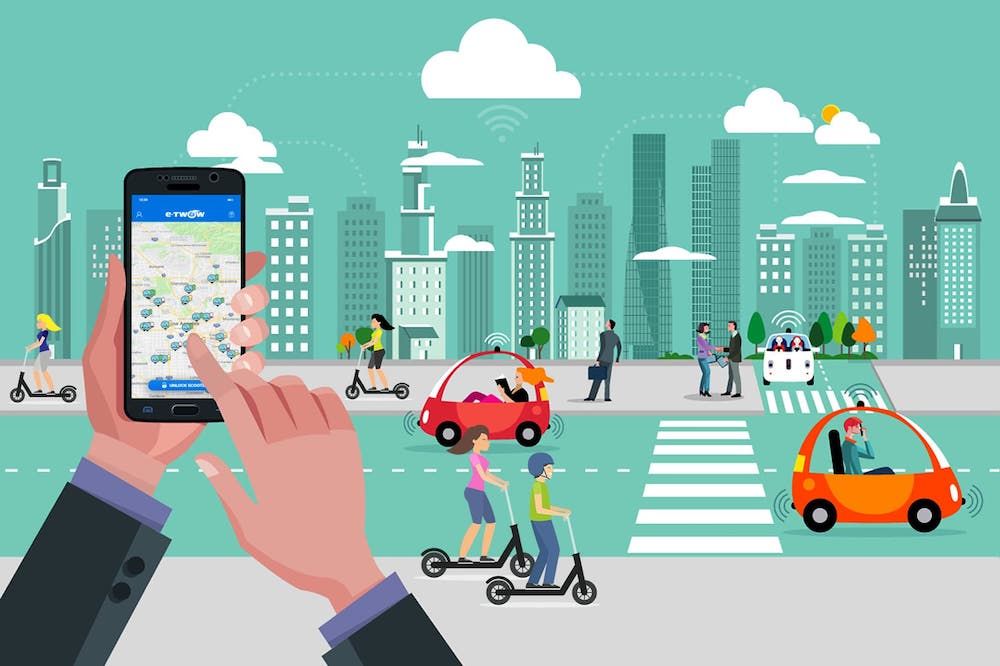
Transportation is one of the most significant challenges facing urban areas today. Smart city architecture addresses this by integrating innovative mobility solutions that reduce traffic congestion, promote sustainable transportation, and make urban spaces more accessible.
- Smart Transportation Features:
- Autonomous Vehicles: Self-driving cars and buses are expected to play a major role in the transportation networks of smart cities. Architecturally, this means designing streets, parking structures, and public spaces that accommodate these autonomous vehicles.
- Electric Vehicle Charging Stations: The growing use of electric vehicles (EVs) has led to the development of charging infrastructure in cities. Smart buildings are incorporating EV charging stations as part of their design to encourage the use of electric transportation.
- Bicycle-Friendly Infrastructure: As cities move toward sustainability, the promotion of cycling as a mode of transport is becoming more important. Smart cities are designed with dedicated bike lanes, bike-sharing programs, and secure bike storage areas integrated into the urban landscape.
- Example in Architecture:
- Masdar City (Abu Dhabi, UAE): Masdar City is a sustainable urban development designed to minimize its carbon footprint. The city’s architecture incorporates electric driverless cars, green transportation infrastructure, and pedestrian-friendly spaces, creating a seamless and environmentally-friendly mobility system.
- Why It Matters: As cities become more congested, smart mobility solutions are essential in ensuring that transportation remains efficient, eco-friendly, and accessible to all. Architecture that integrates these transportation innovations can help alleviate urban traffic problems while promoting sustainability.
4. The Importance of Data-Driven Design in Urban Architecture
Smart cities generate massive amounts of data, which can be used to inform the design of urban spaces. Data-driven architecture allows designers to create more efficient, responsive buildings and urban environments by analyzing patterns of human behavior, environmental conditions, and resource usage.
- Data-Driven Design Features:
- Adaptive Building Systems: Data collected from sensors and devices within buildings can be used to optimize lighting, temperature, and airflow, creating a more comfortable and energy-efficient environment for occupants.
- Real-Time Resource Management: Data analytics allow for real-time monitoring of water usage, waste management, and energy consumption. This information helps urban planners design systems that reduce waste and promote resource conservation.
- Personalized Spaces: With the help of data, architects can create spaces that respond to the specific needs of individuals. For example, data collected from user preferences and building usage patterns can be used to adjust lighting, temperature, and workspace layouts to suit the needs of occupants.
- Example in Architecture:
- CityTree (Berlin, Germany): The CityTree is a mobile, modular urban space that purifies the air using plant-based systems. The design is driven by data, with sensors monitoring air quality and other environmental factors to optimize the tree’s placement and functionality in the city.
- Why It Matters: Data-driven architecture allows cities to be more responsive to the needs of their inhabitants. It enables urban environments to adapt and evolve over time, ensuring that smart cities remain efficient, livable, and sustainable.
5. Inclusive Design for Smart Cities
As cities become smarter, it is essential that they remain accessible and inclusive for all people, regardless of age, ability, or socio-economic status. Smart city architecture must prioritize inclusivity by designing spaces that are equitable, welcoming, and accessible to everyone.
- Inclusive Design Features:
- Universal Design: Smart cities are incorporating universal design principles into their buildings and public spaces. This means creating environments that are usable by all people, including those with disabilities or mobility challenges.
- Affordable Housing Solutions: As cities grow, affordable housing becomes a critical concern. Smart cities are designing affordable, energy-efficient housing solutions that provide quality living spaces for low-income residents.
- Public Engagement: Architecture in smart cities is increasingly being shaped by public engagement and community involvement. Through participatory design processes, residents have a say in how their urban environment is shaped.
- Example in Architecture:
- The High Line (New York City, USA): The High Line is an elevated park built on an old railway track in New York City. The design of the park emphasizes inclusivity, with accessible pathways, seating areas, and public art that encourage community interaction and engagement.
- Why It Matters: Ensuring that smart cities are inclusive is essential for creating spaces where everyone can thrive. Architecture that prioritizes inclusivity fosters a sense of belonging and equality, making urban spaces more accessible and enjoyable for all.
Conclusion
The future of urban architecture lies in the development of smart cities—urban environments that harness technology, sustainability, and data-driven design to improve the lives of their residents. As cities continue to evolve, architects must embrace new innovations to create spaces that are not only functional but also responsive, sustainable, and inclusive. From advanced transportation solutions to energy-efficient buildings and data-driven urban planning, smart city architecture has the potential to revolutionize the way we live, work, and interact with the urban spaces around us. The cities of tomorrow will be more than just places to live—they will be interconnected, dynamic environments that enhance the quality of life for everyone who inhabits them.

